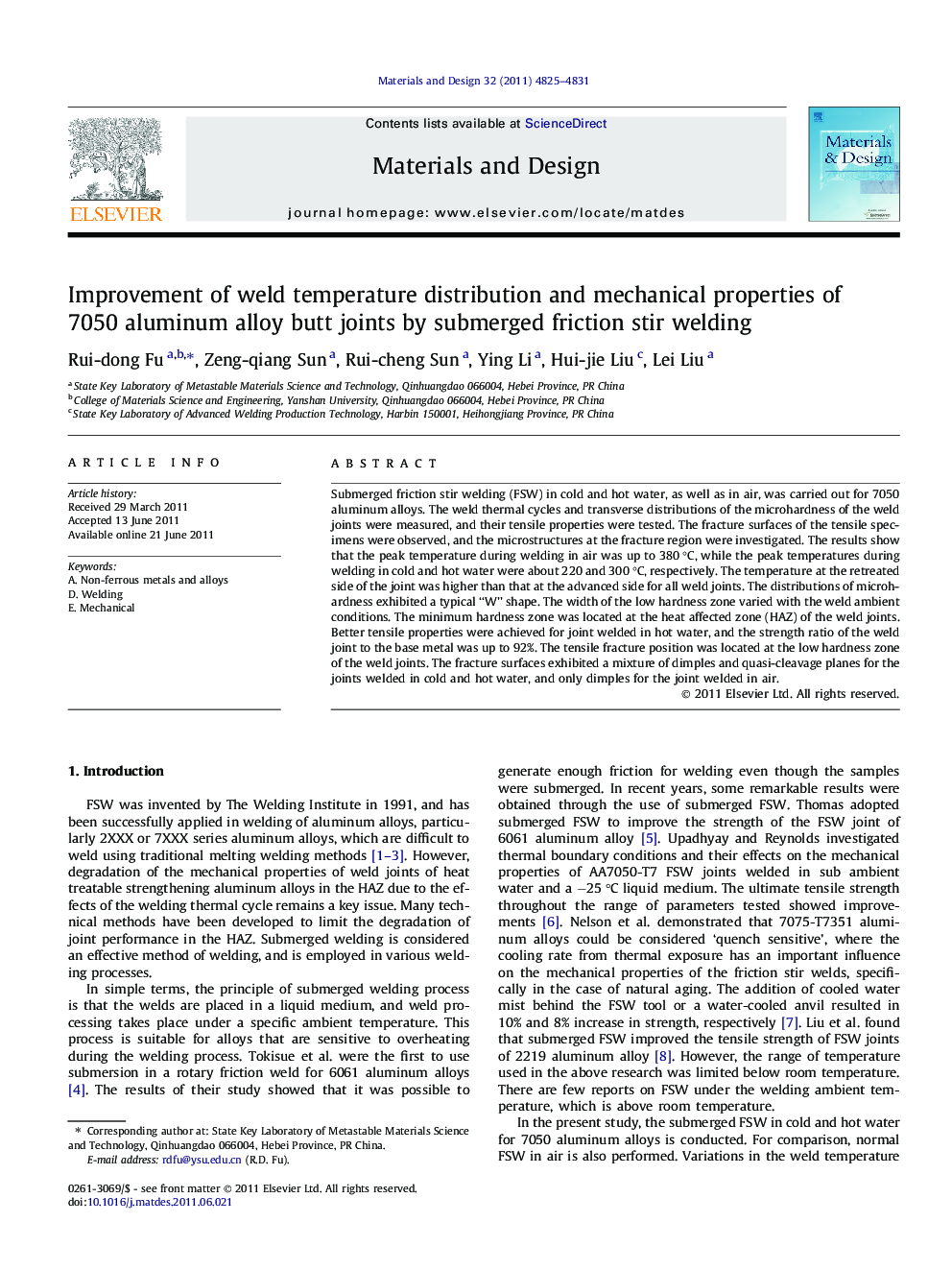| کد مقاله | کد نشریه | سال انتشار | مقاله انگلیسی | نسخه تمام متن |
|---|---|---|---|---|
| 831206 | 1470365 | 2011 | 7 صفحه PDF | دانلود رایگان |

Submerged friction stir welding (FSW) in cold and hot water, as well as in air, was carried out for 7050 aluminum alloys. The weld thermal cycles and transverse distributions of the microhardness of the weld joints were measured, and their tensile properties were tested. The fracture surfaces of the tensile specimens were observed, and the microstructures at the fracture region were investigated. The results show that the peak temperature during welding in air was up to 380 °C, while the peak temperatures during welding in cold and hot water were about 220 and 300 °C, respectively. The temperature at the retreated side of the joint was higher than that at the advanced side for all weld joints. The distributions of microhardness exhibited a typical “W” shape. The width of the low hardness zone varied with the weld ambient conditions. The minimum hardness zone was located at the heat affected zone (HAZ) of the weld joints. Better tensile properties were achieved for joint welded in hot water, and the strength ratio of the weld joint to the base metal was up to 92%. The tensile fracture position was located at the low hardness zone of the weld joints. The fracture surfaces exhibited a mixture of dimples and quasi-cleavage planes for the joints welded in cold and hot water, and only dimples for the joint welded in air.
► The weld temperature fields under three weld ambient conditions were measured.
► The width of minimum hardness zone in the HAZ varied with the ambient conditions.
► Excellent mechanical property of the joint were obtained by welding in hot water.
► The microstructures of the weld joints were investigated by aid of DSC and TEM.
Journal: Materials & Design - Volume 32, Issue 10, December 2011, Pages 4825–4831